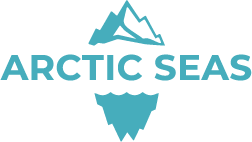The Planet Has Only One Ocean But Many Seas.
Arctic Seas is an information portal by non-profit Snowchange Cooperative, a network of local and Indigenous communities around the north. Here we summarize the Indigenous voices, main science messages and Arctic change for the northern seas.
Our work is connected with the United Nations Decade of Ocean Research 2020-2030 and also our partners, the Future Seas 2030 Initiative (https://futureseas2030.org)
Since July 2021 the portal expanded in capacity and materials regarding coastal Indigenous peoples. This work, on-going, is supported by the EU’s Horizon 2020 research and innovation programme grant agreement No.101003472.
We adhere to the following principles on the portal
Endemic, Cultural Interpretations of Climate and the Land on the Arctic Coasts
Outside descriptions of Arctic cultures, sea areas and the environment do not really convey how the Indigenous and local communities in this region self-conceptualize their home worlds and marine coasts. We may receive reminders and reflections of such cultural understandings by carefully and respectfully learning from the knowledge holders.
Snowchange has been working for 18 years with the Igloolik Oral History Project (see Macdonald, 2004), led for the better part of 35 years by John Macdonald, Leah Otak and Igloolik Elders.
To gain understanding, it is worth quoting Macdonald (2004) at length, when he says: “A defining characteristic of all traditional Inuit societies was their ability, not only to comprehend the intricacies of Arctic weather and environment from their own spiritual and philosophical perspectives, but also to deal with it in practical terms. Inuit clothing and dwellings, for instance, relying solely on materials at hand stand as unsurpassed adaptations to the Arctic climate. In addition, their cosmology, cooperative social skills, comprehension of the land and its resources, and specialize d hunting techniques, all combined to make a people competent and comfortable in a remarkably harsh environment.”
We are positioning Indigenous and local knowledge from all Arctic sea areas alongside science to offer users an authentic view of a specific marine ecosystem and comments.
Arctic seas and climate change
The Arctic system is entering a period of unprecedented change, shifting from the ice dominated system we have known (Box et al., 2019; Landrum and Holland, 2020). Sea ice is a major driver of change. As it melts, dark ocean waters are exposed that are able to absorb more heat, which reinforces and exacerbates melting – a feedback loop that amplifies sea ice loss and temperature rise. Sea ice determines the location, extent and availability of endemic species and is therefore vital for Indigenous peoples’ food security as well as transport capacities.
Over the last decades, the formation of sea ice in autumn is occurring later and the spring melt season is beginning earlier, leading to a lengthening melt season (Stroeve et al, 2018). While the average shows a steadily declining trend, regional and local conditions are increasingly variable and volatile. For example, 2017 through 2019 was a period of intense change in the Bering Sea with conditions that led to record low ice extent and cascading effects including winter flooding events and marinespecies range shifts (Huntington et al 2020; Mustonen and Van Dam, 2021). Then 2020, with the intense Siberian heat wave, was the story of the Siberian coasts.
The Laptev Sea, for example, was entirely ice-free during the summer of 2020 and freeze-up occurred nearly a month later than average (click through the information on the different Seas to see graphs showing sea ice change in each region). The effects of Arctic climate change and sea ice loss are vast and have cascading impacts that extend much beyond the Arctic. Some that are of particular relevance to the Arctic seas, coasts, and their people include: intensifying storms and storm surges, coastal flooding, permafrost thaw and coastal erosion, biodiversity loss, vegetation changes, shifting bird and mammal migration patterns, and species range shifts including advancement of southern species to the north and loss of suitable habitat for Arctic species.
All of the above point to the massive changes underway in this unique part of the world. We will include reviews of present and past climate and environmental events to the regional sea sections and they will be updated regularly.
What do these changes mean, for the people of the Arctic coasts and beyond? What messages from the Arctic seas?
We wish to encourage visitors and users to contemplate what these changes under way mean and how they are affecting the northern coastal communities. We hope you will find these “dispatches from the cold seas” interesting.
Welcome!
References
Box, JE et al. (2019). Key indicators of Arctic climate change: 1971-2017. Environmental Research Letters. 14, doi: 045010.
Huntington, H.P., S.L. Danielson, F.K. Wiese, M. Baker, P. Boveng, J. Citta, A. De Robertis, D., M.S. Dickson, E. Farley, J. Craighead George, K. Iken, D.G. Kimmel, K. Kuletz, C. Ladd, R. Levine, L. Quakenbush, P. Stabeno, K. M. Stafford, D. Stockwell and C. Wilson. (2020). Evidence suggests potential transformation of the Pacific Arctic ecosystem is underway. Nature Climate Change, 10, 342-348. https://doi.org/10.1038/s41558-020-0695-2
Landrum, L. and Holland, M. (2020) Extremes become routine in an emerging new Arctic.
Nature Climate Change. 10, 1108 – 1115 Macdonald, John. (2004.) Silaga Nauk – Where is My Weather. In Mustonen, T. (ed). Snowscapes, Dreamscapes – A Snowchange Book On Community Voices of Change. Tampere: Snowchange Co-op.
Mustonen, T., and Van Dam, B. (2021) Climate change and Unalakleet: A deep analysis. Submitted to Regional Environmental Change
Stroeve, J. and D. Notz (2018) Changing state of Arctic sea ice across all seasons. Environ. Res. Lett. 13. 103001.
